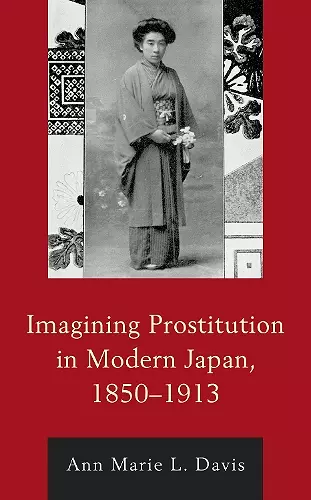Imagining Prostitution in Modern Japan, 1850–1913
Format:Hardback
Publisher:Lexington Books
Published:13th Mar '19
Currently unavailable, and unfortunately no date known when it will be back
This hardback is available in another edition too:
- Paperback£37.00(9781498542166)

In the winter of 1913, a small crowd gathered on the streets of a famous red-light district on the outskirts of Tokyo. Curious patrons, journalists, and onlookers formed a steady procession to see the prostitute, Wada Yoshiko, and celebrate the release of her new book. A Prostitute’s Tale divulged inner secrets about her co-workers, patrons, and difficult confinement in a government-run syphilis hospital. According to the press, the author was a literary prostitute, a new expert, and a compelling version of Japan’s new woman. Soon widely acclaimed, her literary work heralded a growing public desire for inside knowledge about the lived experiences of pleasure workers. Wada’s success was the product of more than half-a-century of high-stakes conversations about the future of Japan. Her fame as an author simultaneously challenged and complemented previous discussions about the role of the female prostitute in the modern nation-state. However, while her perspective was new, the information she shared invoked key themes that had proliferated about her in prior decades. Since the 1850s, when Japan was forced to sign the “unequal” commercial treaties with the Western imperial powers, wide-ranging debates had taken place that linked the prostitute to national security and international prestige in imperative new ways. Imagining Prostitution in Modern Japan traces the symbol of the prostitute as a project of nation- and empire-building from the 1850s to 1913, ending one year after the death of the Meiji emperor, and coincidentally, the year of Wada’s publication. It untangles how ideas about pleasure work intersected with Japan’s transformation into a modern nation according to Western models. It asserts that the figure of the prostitute was a powerful symbolic resource that wide-ranging interest groups deployed, variously, to negotiate and define shifting distinctions of status, identity, and power. Each of the debates about the prostitute was in turn central to and mutually constitutive of the emergent social order in Meiji Japan.
Imagining Prostitution in Modern Japan, 1850–1913 is a timely reminder that gender as an analytic tool provides new perspectives to even the "oldest profession." Intelligent, refreshing, and clearly written, Davis investigates how the historicity of the gender specific category “prostitute” changes during a period of rapid social change in Japan. By focusing on the diverse and competing modes of representing prostitution in the Meiji period, Davis brilliantly reveals how politics, race, class and gender are interconnected. -- Bill Mihalopoulos, University of Central Lancashire
In this highly readable book, Ann Marie Davis explores how modern Japanese prostitutes, although often marginalized as historical actors, were simultaneously at the center of larger political and social forces, such as Western imperialism and Meiji period (1868-1912) nation-building. Employing a wide range of textual and visual materials to argue for their interstitial position, she innovatively shows that these sex workers became caught up in numerous and overlapping discourses, including law, statistics, art, literature, and more. Importantly, Davis also reveals how progressive actors, including some “enlightened” women themselves, sought to free licensed prostitution from the thralls of masculinist sexism, capitalist commodification, and securitized pimping. Much more than a history of Japanese history, this interdisciplinary study powerfully demonstrates that gender, class, and empire must be at the forefront of any critical analysis of modern sexuality. -- Todd A. Henry, University of California-San Diego
ISBN: 9781498542142
Dimensions: 238mm x 162mm x 22mm
Weight: 585g
248 pages